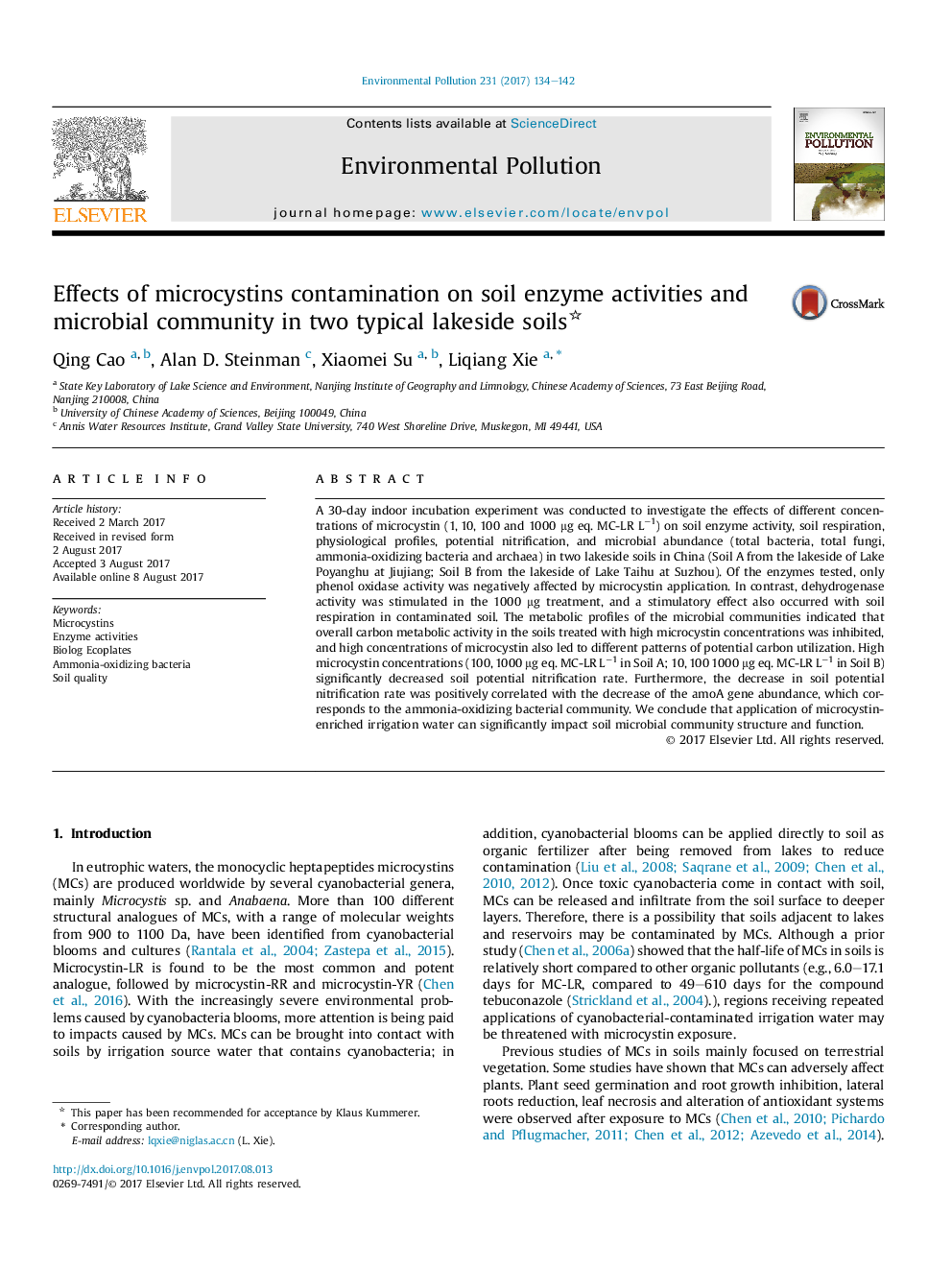| کد مقاله | کد نشریه | سال انتشار | مقاله انگلیسی | نسخه تمام متن |
|---|---|---|---|---|
| 5748555 | 1619142 | 2017 | 9 صفحه PDF | دانلود رایگان |
- First report on effect of microcystins on soil enzyme activities and microbial community.
- Phenol oxidase activity was negatively affected by microcystins application.
- High concentrations of microcystin led to different patterns of potential carbon utilization.
- Decrease in soil potential nitrification and AOB gene abundance was linked.
A 30-day indoor incubation experiment was conducted to investigate the effects of different concentrations of microcystin (1, 10, 100 and 1000 μg eq. MC-LR Lâ1) on soil enzyme activity, soil respiration, physiological profiles, potential nitrification, and microbial abundance (total bacteria, total fungi, ammonia-oxidizing bacteria and archaea) in two lakeside soils in China (Soil A from the lakeside of Lake Poyanghu at Jiujiang; Soil B from the lakeside of Lake Taihu at Suzhou). Of the enzymes tested, only phenol oxidase activity was negatively affected by microcystin application. In contrast, dehydrogenase activity was stimulated in the 1000 μg treatment, and a stimulatory effect also occurred with soil respiration in contaminated soil. The metabolic profiles of the microbial communities indicated that overall carbon metabolic activity in the soils treated with high microcystin concentrations was inhibited, and high concentrations of microcystin also led to different patterns of potential carbon utilization. High microcystin concentrations (100, 1000 μg eq. MC-LR Lâ1 in Soil A; 10, 100 1000 μg eq. MC-LR Lâ1 in Soil B) significantly decreased soil potential nitrification rate. Furthermore, the decrease in soil potential nitrification rate was positively correlated with the decrease of the amoA gene abundance, which corresponds to the ammonia-oxidizing bacterial community. We conclude that application of microcystin-enriched irrigation water can significantly impact soil microbial community structure and function.
254
Journal: Environmental Pollution - Volume 231, Part 1, December 2017, Pages 134-142
